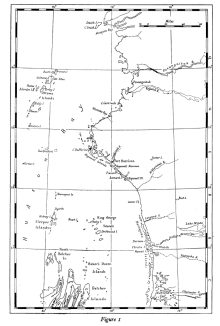You might think that working in a herbarium, a place crammed full of dead plants, would be a bit dull, but the stories that accompany those plants can be really interesting. Each collection was made by an explorer and each specimen caught that person’s eye for a reason. My favourite part of working in the herbarium is solving the puzzles that come up from time to time. One of our recent accomplishments has been putting together the bits and pieces of information we had about a collection that had been stored in the herbarium for many years.
We had boxes and boxes of pressed arctic specimens, cryptically labelled with abbreviations and dating from 1944. The labels were mainly scraps of paper with a date, some roman numerals and the initials A.R.A.T. Some were identified, some were partially identified and some were unknown species. We knew who A.R.A.T. was: Dr. A.R.A. Taylor had taught biology at UNB from 1946 to 1987. He had been responsible for “resurrecting” the herbarium from many years in storage in the Old Arts Building when he started here (Young, 1986). The arctic plants turned out to be part of his personal collection, picked up incidentally during a Geodetic Survey of Canada expedition led by T.H. Manning along the northeast coast of Hudson Bay. Taylor collected, pressed and dried approximately 800 plants on that trip!


In 2010 volunteer David Smith started by tallying all of the information he could glean from the scraps of paper. Meanwhile, Elizabeth Mills and some students began trying to track down more information about the expedition. They eventually found T.H.Manning’s account of the trip published in “Explorations on the East Coast of Hudson Bay” (Manning, T.H. 1947). From this and some partial maps, we generated an itinerary of their travels and linked that to the site numbers and locale details found on the labels.
Dr. Mary Young has spent the past 5 years resourcefully working her way through the collection, confirming the identities of the specimens, or, in fact, identifying them from scratch. This was generally not an easy task, given that the specimens were over 68 years old! Some were in quite rough shape and some had disintegrated entirely. The specimens were then mounted and databased and filed into our main collection. Thanks to all of these efforts, this collection has found a home in the Herbarium and will soon be available to researchers around the world, contributing to our ecological knowledge of the arctic.
